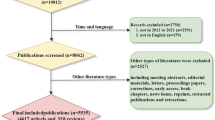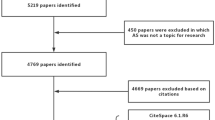Abstract
In recent years, scientific efforts on the topic “gout” have focused on pathogenetic aspects. This has opened new strategies of anti-inflammatory therapy and has improved urate-lowering therapy. So far, a scientometric analysis of the topic “gout” has not been generated despite an increased need for it in times of modified evaluation criteria for academic personnel and a subsequent tendency to co-authorship and author self-citation. The study aims to evaluate quality and quantity of scientific research dealing with the topic “gout” and to contribute to distinguish relevant research output. The current study uses scientometric methods and large-scale data analysis to evaluate quality and quantity of scientific efforts in the field of “gout.” Data were gained from PubMed and ISI-Web. In the last 22 years (1990–2012), 4,424 items were published by 71 countries, of which the USA have been the most productive supplier with 32 % of all publications, followed in considerable distance by the United Kingdom, Japan, Spain and Germany, respectively. The USA have established their position as center of international cooperation. The most prolific journals in the field of gout were “Arthritis and Rheumatism,” “Annals of the Rheumatic diseases” and the “Journal of Rheumatology.” Our analysis specifies the most productive authors and institutions engaged with the topic, the most successful international and national cooperation and the most prolific journals and subject areas. Nevertheless, scientometric indicators, such as h-index, citation rate and impact factor, commonly used for assessment of scientific quality, should be seen critically due to distortion by bias of self-citation and co-authorship.





Similar content being viewed by others
References
Andersen J, Belmont J, Cho CT (2006) Journal impact factor in the era of expanding literature. J Microbiol Immunol Infect 39:436–443
Bartneck C, Kokkelmans S (2011) Detecting h-index manipulation through self-citation analysis. Scientometrics 87:85–98
Chen LX, Schumacher HR (2008) Gout: an evidence-based review. J Clin Rheumatol 14:S55–S62
Choi H (2008) Primer on the rheumatic diseases: gout epidemiology, pathology and pathogenesis. Springer Science and Business Media LLC, New York, USA
Choi HK, Curhan G (2007) Coffee, tea, and caffeine consumption and serum uric acid level: the third national health and nutrition examination survey. Arthritis Rheum 57:816–821
Choi HK, Mount DB, Reginato AM (2005) Pathogenesis of gout. Ann Intern Med 143:499–516
Garfield E (1986) Which medical journals have the greatest impact? Ann Intern Med 105:313–320
Gastner MT, Newman ME (2004) From the cover: diffusion-based method for producing density-equalizing maps. Proc Natl Acad Sci USA 101:7499–7504
Hak AE, Choi HK (2008) Menopause, postmenopausal hormone use and serum uric acid levels in US women—the third national health and nutrition examination survey. Arthritis Res Ther 10:R116
Haug C (2006) Authorship and co-authorship. Tidsskr Nor Laegeforen 126:429
Hirsch JE (2007) Does the H index have predictive power? Proc Natl Acad Sci USA 104:19193–19198
Hirsch JE (2005) An index to quantify an individual’s scientific research output. Proc Natl Acad Sci USA 102:16569–16572
Kulkarni AV, Aziz B, Shams I et al (2011) Author self-citation in the general medicine literature. PLoS One 6:e20885
Man CY, Cheung IT, Cameron PA et al (2007) Comparison of oral prednisolone/paracetamol and oral indomethacin/paracetamol combination therapy in the treatment of acute goutlike arthritis: a double-blind, randomized, controlled trial. Ann Emerg Med 49:670–677
Martinon F, Petrilli V, Mayor A et al (2006) Gout-associated uric acid crystals activate the NALP3 inflammasome. Nature 440:237–241
Mohebbi MR (2008) The impact of “Impact Factor” on medical journalism in the developing world! Indian Pediatr 45:604
Onuora S (2012) Crystal arthritis: canakinumab relieves gout flares when treatment options are limited. Nat Rev Rheumatol 8:369
Petrilli V, Martinon F (2007) The inflammasome, autoinflammatory diseases, and gout. Jt Bone Spine 74:571–576
Richette P, Bardin T (2010) Gout. Lancet 375:318–328
Saag KG, Choi H (2006) Epidemiology, risk factors, and lifestyle modifications for gout. Arthritis Res Ther 8(Suppl 1):S2
Sundy JS, Baraf HS, Yood RA et al (2011) Efficacy and tolerability of pegloticase for the treatment of chronic gout in patients refractory to conventional treatment: two randomized controlled trials. JAMA 306:711–720
Terkeltaub R (2010) Update on gout: new therapeutic strategies and options. Nat Rev Rheumatol 6:30–38
Zhang W, Doherty M, Bardin T et al (2006) EULAR evidence based recommendations for gout. Part II: Management. Report of a task force of the EULAR Standing Committee for International Clinical Studies Including Therapeutics (ESCISIT). Ann Rheum Dis 65:1312–1324
Zhang W, Doherty M, Pascual E et al (2006) EULAR evidence based recommendations for gout. Part I: Diagnosis. Report of a task force of the Standing Committee for International Clinical Studies Including Therapeutics (ESCISIT). Ann Rheum Dis 65:1301–1311
Conflict of interest
The authors declare that they have no conflict of interest.
Author information
Authors and Affiliations
Corresponding author
Rights and permissions
About this article
Cite this article
Gerber, A., Groneberg, D.A., Klingelhöfer, D. et al. Gout: a critical analysis of scientific development. Rheumatol Int 33, 2743–2750 (2013). https://doi.org/10.1007/s00296-013-2805-1
Received:
Accepted:
Published:
Issue Date:
DOI: https://doi.org/10.1007/s00296-013-2805-1




